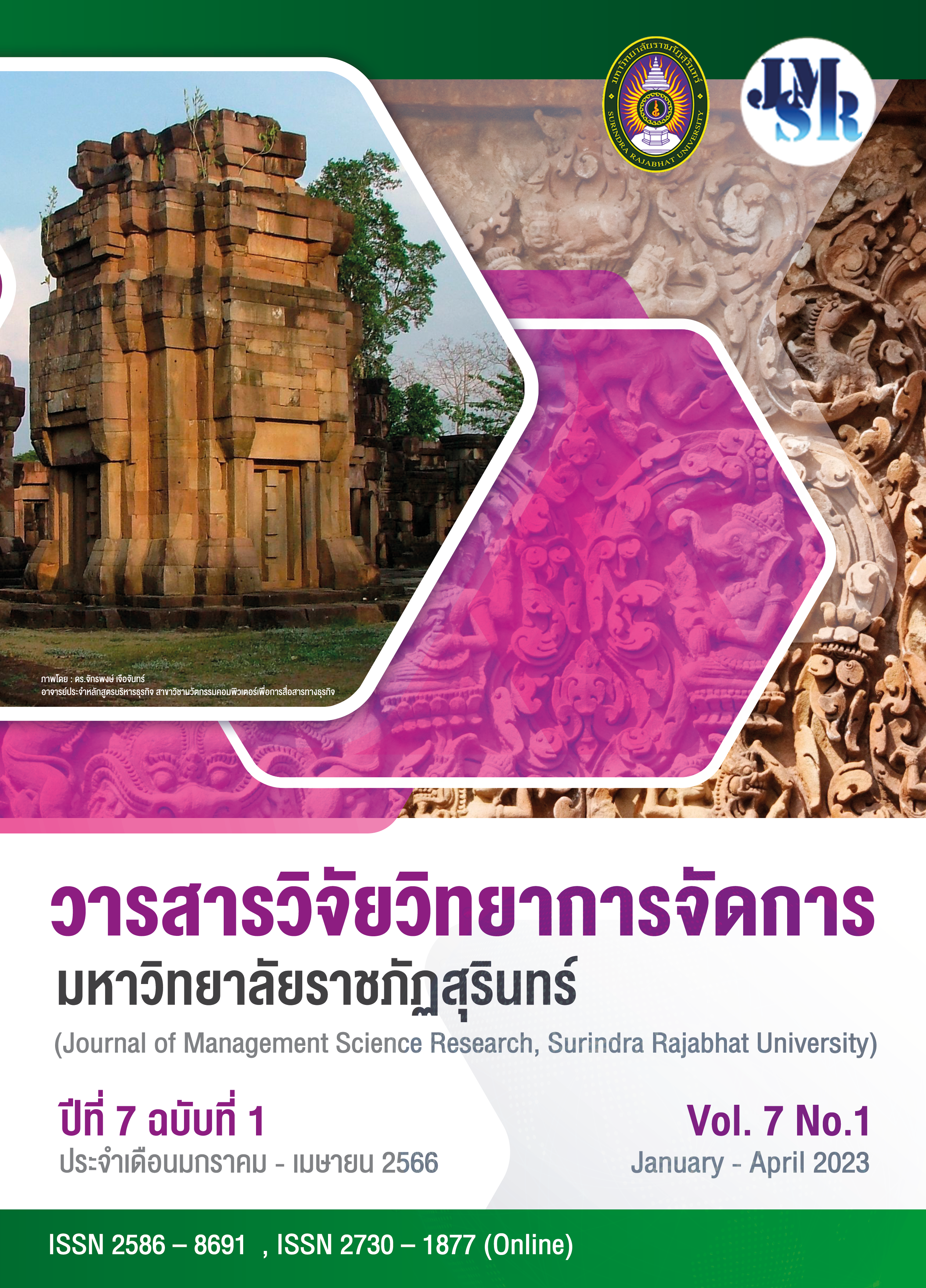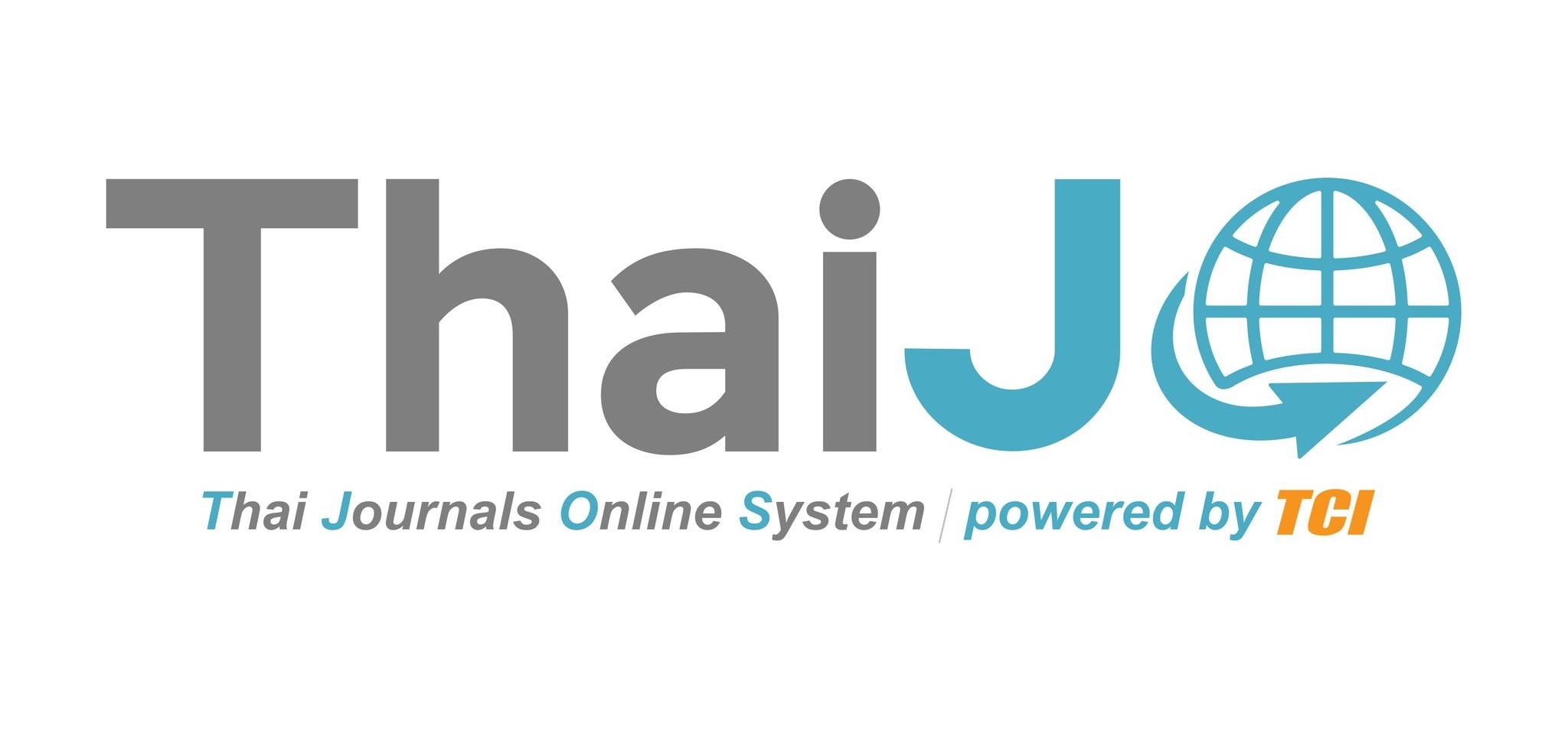การตลาดดิจิทัลในยุคที่ท้าทาย บทบาทความได้เปรียบทางการแข่งขันของผู้ประกอบการไทย
คำสำคัญ:
การตลาดดิจิทัล, ความได้เปรียบทางการแข่งขัน, ผู้ประกอบการบทคัดย่อ
ในปัจจุบันความก้าวหน้าทางเทคโนโลยีที่ทันสมัยช่วยทำให้การติดต่อสื่อสารเป็นไปได้อย่างรวดเร็ว และสามารถที่จะแพร่กระจายข้อมูลข่าวสารต่าง ๆ ไปยังผู้บริโภคได้อย่างทั่วถึงทำให้มีการติดต่อกันได้ง่ายและสะดวกมากขึ้นก่อให้เกิดการพัฒนาการตลาดดิจิทัลเพื่อให้ผู้บริโภคเข้าถึงข้อมูลได้ตามที่ต้องการ และด้วยความก้าวหน้าของเทคโนโลยีการสื่อสารที่มีความหลากหลาย ช่องทางการสื่อสารใหม่ ๆ ที่เกิดขึ้นในยุคของการใช้สื่อดิจิทัลได้เข้ามามีบทบาทต่อการตลาด การโฆษณาและการประชาสัมพันธ์มากขึ้น ย่อมส่งผลต่อรูปแบบการทำการตลาดแบบเดิม ๆ
บทความนี้มีวัตถุประสงค์เพื่อสร้างความเข้าใจเกี่ยวกับการตลาดดิจิทัลและการใช้เทคโนโลยีรวมถึงสื่อออนไลน์ เนื่องจากการตลาดดิจิทัลมีการพัฒนาอย่างก้าวกระโดดเพื่อตอบสนองผู้บริโภคยุคใหม่ที่มีความต้องการสินค้าและบริการที่สร้างสรรค์เพื่อตอบโจทย์ลูกค้า โดยการใช้อินเตอร์เน็ตในยุคตลาดดิจิทัล เว็บไซต์ โซเชียลมีเดีย แอปพลิเคชั่น ไปจนถึงแพลตฟอร์มต่าง ๆ ซึ่งการตลาดต้องเปลี่ยนแปลงตามพฤติกรรมผู้บริโภคสมัยใหม่จากส่วนประสมทางการตลาดดั้งเดิม 4P’s มาสู่การตลาดดิจิทัลที่ให้ความสาคัญกับแนวคิด 4E’s ดังนั้นผู้ประกอบการธุรกิจต้องเผชิญกับความท้าทาย ความทันสมัยและจำเป็นที่ต้องก้าวทันกับการตลาดยุคใหม่ที่ขับเคลื่อนด้วยเทคโนโลยี นวัตกรรม และการสร้างสรรค์อย่างต่อเนื่องเพื่อสร้างขีดความสามารถในการแข่งขันที่เชื่อมโยงตลาดดิจิทัลได้อย่างมีประสิทธิภาพและสร้างการเติบโตให้กับธุรกิจ
เอกสารอ้างอิง
Afrina, Y., Sadia, T., and Kaniz, F. (2015). Effectiveness of Digital Marketing in the Challenging Age: An Empirical Study. International Journal of Management Science and Business Administration, 1(5), 69-80.
Ashish, G., Debasrita, C., and Anwesha, L. (2018). Artificial Intelligence in Internet of Things. Journal of Institution of Engineering and Technology, 3(4), 208-218.
Bala, M. and Verma, D. (2018). Critical Review of Digital Marketing. International Journal of Management, IT & Engineering, 8(10), 321–339.
Batinic, I. (2015). Role and Importance of Internet Marketing in Modern Hotel Industry. Journal of Process Management–New Technologies, International, 3(3), 34-38.
Bosma, N., Jones, K., Autio, E. , and Levie, J. (2008). Global Entrepreneurship Monitor 2007 Executive Report. [Online]. Retrieved February 17th, 2022, Available : https://entreprenorskapsforum.se/wp-content/uploads/2010/02/GEM-Global-Report_2007.pdf.
Chaffey, D. (2010). Applying Organizational Capability Models to Assess the Maturity of Digital Marketing Governance. Journal of Marketing Management, 26(3-4), 187-196.
Chaffey, D. and Ellis-Chadwick, F. (2016). Digital Marketing. (6th Ed.). New York: Pearson-HE. 729 pages.
Dennis, C., Merrilees, B., Jayawardhena, C., and Tiu Wright, L. (2009). E‐consumer Behaviour. European Journal of Marketing, 43(9/10), 1121–1139.
Epuran, G, Ivasciuc, I. S., and Micu, A. (2015). From 4P’s to 4 E’s—How to Avoid the Risk of Unbalancing the Marketing Mix in Today Hotel Businesses. Annals of Dunarea de Jos University of Galati Fascicle I Economics and Applied Informatics, 21(2), 77–85.
Goolsbee, A. D. and Klenow, P. J. (2018). Internet Rising, Prices Falling: Measuring inflation in a World of E-Commerce. AEA Papers and Proceedings 2018, 108 (May 2018), 488-92.
Grudin, J, Durica, M., and Svabova, L. (2019). Labor Market Flexibility in Platform Capitalism: Online Freelancing, Fluid Workplaces, and the Precarious Nature of Employment. Psychosociological Issues in Human Resource Management, 7(1), 72–77.
Healy, P. M., Serafeim, G., Srinivasan, S., and Yu, G. (2014). Market Competition, Earnings Management, and Persistence in Accounting Profitability Around the World. Review of Accounting Studies, 19(4), 1281–1308.
Hennig- Thurau, T, Malthouse, E. C., Friege, C., Gensler, S. Lobschat, L., Rangaswamy, A., et al. (2010). The Impact of New Media on Customer Relationships. Journal of Service Research, 13(3), 311-330.
Ikechi, A, Chinenye, E. P., and Chiyem, O. (2017). Marketing Mix Concept: Blending the Variables to Suit the Contemporary Marketers. Network for Research and Development in Africa, 9(1), 55–65.
Ilic, D., Ostojic, S., and Damnjanovic, N. (2014). The Importance of Marketing Innovation in New Economy. Singidunum Journal of Applied Sciences, 11(1), 34–42.
Järvinen, J., Aarne, T., Karjaluoto, H., and Jayawardhena, C. (2012). Digital and Social Media Marketing Usage in B2B. Marketing Management Journal, 22(1), 102-117.
Kapoor, K. K., Tamilmani, K., Rana, N. P., Patil, P., Dwivedi, Y. K., and Nerur, S. (2017). Advances in social Media Research: Past, Present and Future. Information Systems Frontiers, 20(3), 531–558.
Kaur, G. (2017). The Importance of Digital Marketing in Tourism Industry. International Journal of Research -GRANTHAALAYAH, 5(6), 72-77.
Kingsnorth, S. (2016). Digital Marketing Strategy. London: Kogan Page. 344 pages.
Kotler, P., Kartajaya, H., and Setiawan, I. (2017). Marketing 4.0: Moving from Traditional to Digita. New Jersey: John Wiley and Sons. 207 pages.
Lamberton, C. and Stephen, A. T. (2016). A Thematic Exploration of Digital, Social Media, and Mobile Marketing: Research Evolution from 2000 to 2015 and an Agenda for Future Inquiry. Journal of Marketing, 80(6), 146-172.
Lauterborn, B. (1990). New Marketing Litany: Four P’s Passe: C-Words Take Over. [Online]. Retrieved February 12th, 2022, Available : https://www.semanticscholar.org/paper/NEW-MARKETING-LITANY%3A-FOUR-PS-PASSE%3A-C-WORDS-TAKE- Lauterborn/086d52d4
dff8b8601f828896e296168abc93e5f9#citing-papers.
Leeflang, P. S. H., Verhoef, P. C., Dahlström, P., & Freundt, T. (2014). Challenges and Solutions for Marketing in A Digital Era. European Management Journal, 32(1), 1-12.
Liñán, F. and Jaén, I. (2020). The Covid-19 Pandemic and Entrepreneurship: Some Reflections. International Journal of Emerging Markets, 17(5), 1165-1174.
McCarthy, E. J. (1964). Basic Marketing : A Managerial Approach. Illinois: Richard D. Irwin, Inc. 848 pages.
Meilhan, D. (2019). Customer Value Co-Creation Behavior in the Online Platform Economy. Journal of Self-Governance and Management Economics, 7(1), 19–24.
Melewar, T. C. and Smith, N. (2003). The Internet Revolution: Some Global Marketing Implications. Marketing Intelligence & Planning, 21(6), 363–369.
Merisavo, M. and Raulas, M. (2004). The Impact of Email Marketing on Brand Loyalty. Journal of Product & Brand Management, 13(7), 498-505.
Morgan, J. and Sisak, D. (2016). Aspiring to Succeed: A Model of Entrepreneurship and Fear of Failure. Journal of Business Venturing, 31(1), 1-21.
Nambisan, S., Lyytinen, K., Majchrzak, A., and Song, M., (2017). Digital Innovation Management: Reinventing Innovation Management Research in a Digital World. MIS Quarterly, 41(1), 223-238.
Ngai, E. W T., Tao, S. S.C., and Moon, K. K. (2015). Social Media Research: Theories, Constructs, and Conceptual Frameworks. International Journal of Information Management : The Journal for Information Professionals, 35(1), 33–44.
Piñeiro-Otero, T. and Martínez-Rolán, X. (2016). Understanding Digital Marketing—Basics and Actions. in Carolina Machado and J. Paulo Davim (Editor), MBA: Theory and Application of Business and Management Principles, (p. 37–74). Switzerland : Springer International Publishing.
Pop, R. A, Săplăcan, Z., and Alt, M. A. (2020). Social Media Goes Green -The Impact of Social Media on Green Cosmetics Purchase. Information, 11(9), 447-463.
Qianqian (Ben), L., Karahanna, E., and Watson, R. T. (2011). Unveiling User-Generated Content: Designing Websites to Best Present Customer Reviews. Business Horizons, 54(3), 231–240.
Ruenrom, G. (2018). The Identification of Research Problems in Digital Marketing for Thailand in the Future. Chulalongkorn Business Review, 40(157), 100-140. [in Thai]
Russell, H. (2020). Sustainable Urban Governance Networks: Data-driven Planning Technologies and Smart City Software Systems. Geopolitics, History, and International Relations, 12(2), 9–15.
Satya, P. (2015). A Study on Digital Marketing and its Impact. International Journal of Science and Research, 6(2), 866–868.
Shideler, D., and Badasyan, N. (2012). Broadband Impact on Small Business Growth in Kentucky. Journal of Small Business and Enterprise Development, 19(4), 589-606.
Singh, T. P. and RatnaSinha (2017). The Impact of Social Media on Business Growth and Performance in India. International Journal of Research in Management & Business Studies, 4(1), 36-40.
Taiminen, H. M., and Karjaluoto, H. (2015). The Usage of Digital Marketing Channels in SMEs. Journal of Small Business and Enterprise Development, 22(4), 633-651.
Tisdell, C., Ahmad, S., Agha, N., Steen, J., and Verreynne, M.-L. (2020). Microfinance for Wives: Fresh Insights Obtained from a Study of Poor Rural Women in Pakistan. Journal of Research in Gender Studies, 10(1), 9–37.
Wang, W. and Street, W.N. (2018). Modeling and Maximizing Influence Diffusion in Social Networks for Viral Marketing. Applied Network Science, 3(1), 1–26.
Wymbs, C. (2011). Digital Marketing: The Time for a New “Academic Major” Has Arrived. Journal of Marketing Education, 33(1), 93-106.
Yang, C.-S., Lu, C.-S., Haider, J. J., and Marlow, P. B. (2013). The Effect of Green Supply Chain Management on Green Performance and Firm Competitiveness in the Context of Container Shipping in Taiwan. Transportation Research Part E: Logistics and Transportation Review, 55(C), 55–73.







